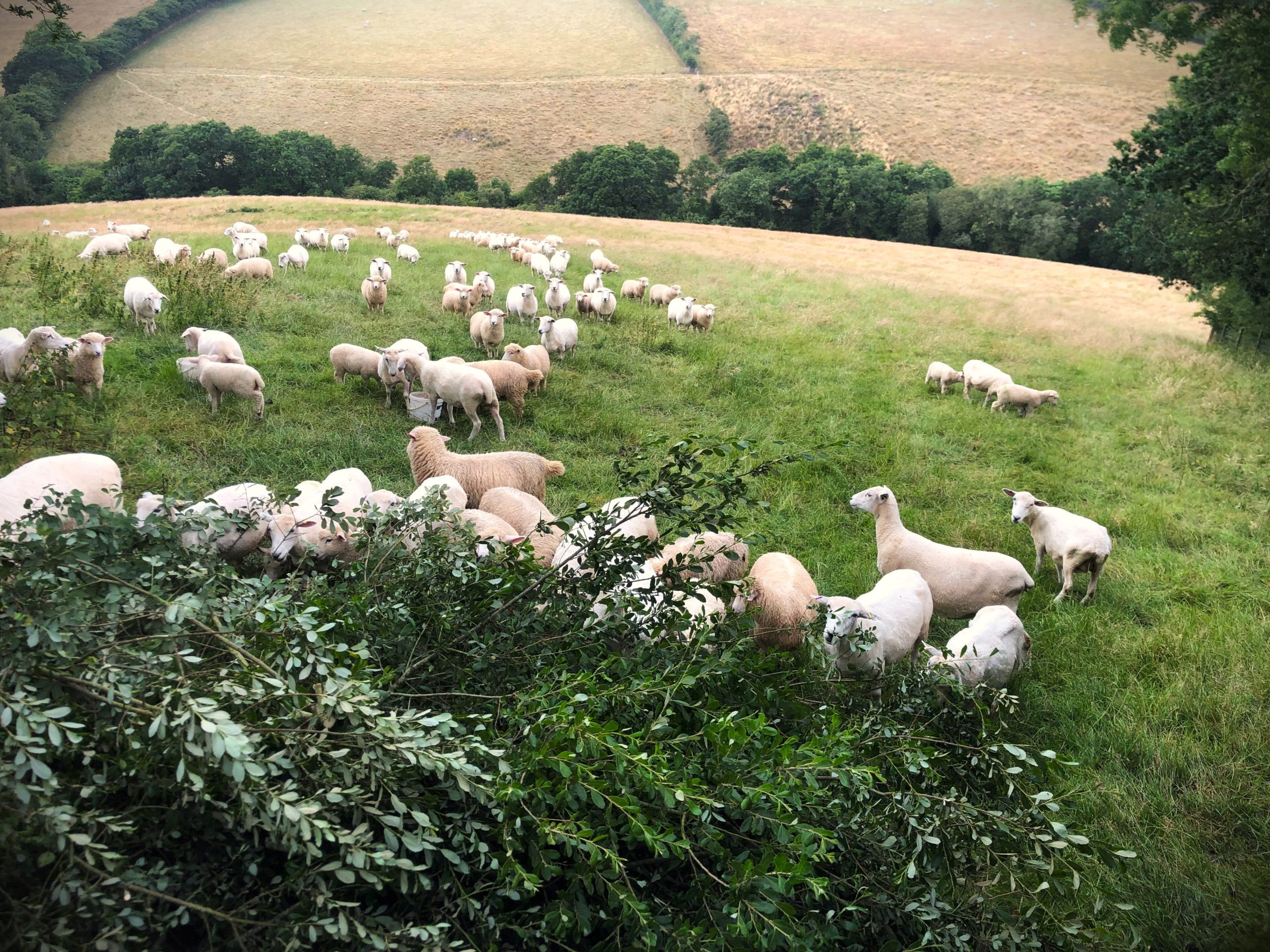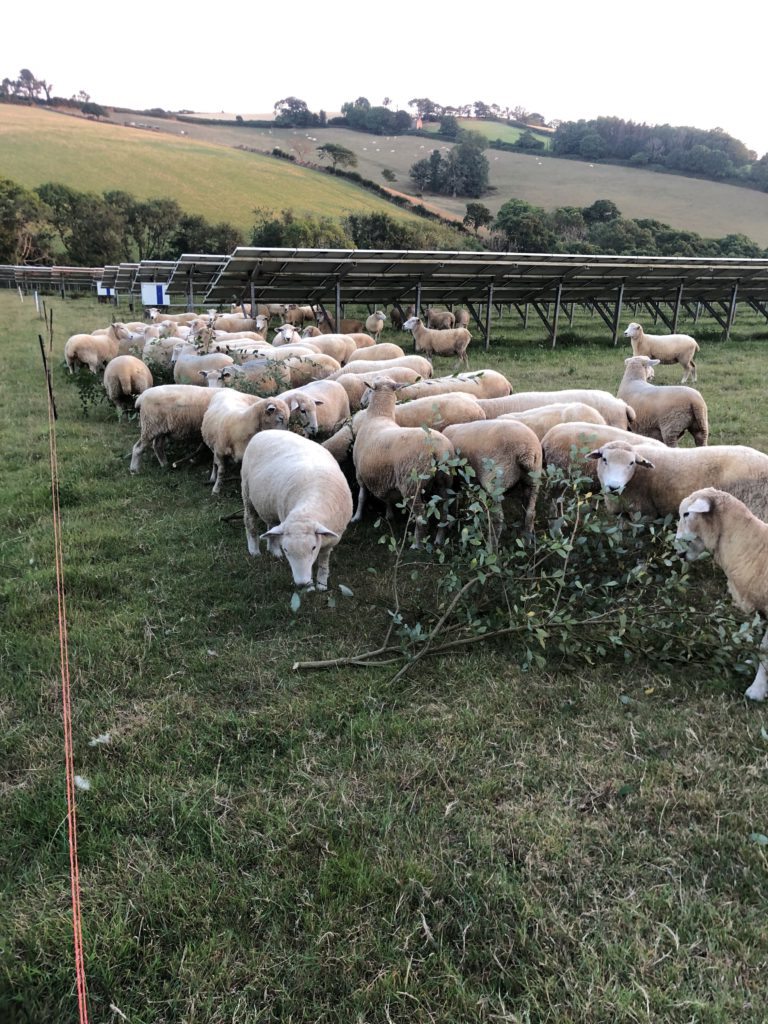
By Anthony Ellis, Senior Advisor at FCT
Growing willow on farms
Pensipple Farm is our 200 acre mixed, family farm in South East Cornwall which has been in the family for 84 years. We have a small flock of NZ Romney sheep, grow winter wheat and spring oats with herbal leys and currently winter bird food in the rotation, as part of a substantial Countryside Stewardship and SFI agreement.
10 years ago, my father and uncle entered an agreement with a solar company and 37 acres of solar panels were installed on the farm. In the decade that followed, parts of the farm which became less accessible due to the solar farm perimeter fence started to sprout willows along the 650m fence line. As they grew higher the solar company asked if they could be managed so they didn’t shade the panels out.
Having read about the positive benefits of willow as a forage source I decided to see what would happen if I coppiced the tall growth and threw it in for the sheep. The result has been dramatic – the sheep absolutely loved it! I now pollard, rather than coppice, the fence line in a 3-4 year rotation all year round – carefully checking for nesting birds. The branches are thrown in for the sheep to browse, and allow them to graze the lower branches as they rotate through this part of the farm.

Sheep eating willow
The majority is Grey WIllow and is self seeded, although I have planted more saplings this winter in other parts of the farm where the sheep graze.
The leaves contain good levels of Zinc and Cobalt, both of which are important for animal health but, cobalt in particular is very important for growing lambs. The bark contains salicin which is a precursor that allows the body to produce salicylic acid, a natural form of Asperine which has anti-inflammatory and pain relieving properties, and has been used for centuries for just this purpose.
I try, but don’t always succeed, in giving them fresh growth to browse two or three times a week from May to October; they will eat leaves and bark. Observing which parts of the plant they are eating can give clues as to their health and what they are looking for. If there is excessive stripping of the bark, this can suggest that some individuals might be looking for pain relief for example, and we can focus our checks accordingly.
The joy of willow is that pretty much all grazing livestock can eat it and, if we observe livestock entering a new field, we often see them move to the hedge rows to seek it out, among other trees and herbs. This suggests there is an innate understanding of what their bodies need and where they can find it in the landscape.
Wider benefits
Apart from the feed benefits of willow, it can also provide shade in summer and shelter in winter, potentially stretching the grazing season and increasing DMI on hotter days. On top of this, strategic planting of willow can reduce flood risk, provide a habitat for birds and insects, as well as increase soil health and sequester above and below ground carbon in significant quantities. Willow coppice has been shown to sequester 16.33 tonnes of CO2e/ha/yr (source: Farm Carbon Calculator).
In the future, I’d like to look into chipping the remnants of the grazed branches and compost them, or extract the growth promoting compounds from them to produce a soil drench or foliar feed. The possibilities are quite exciting!

